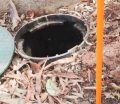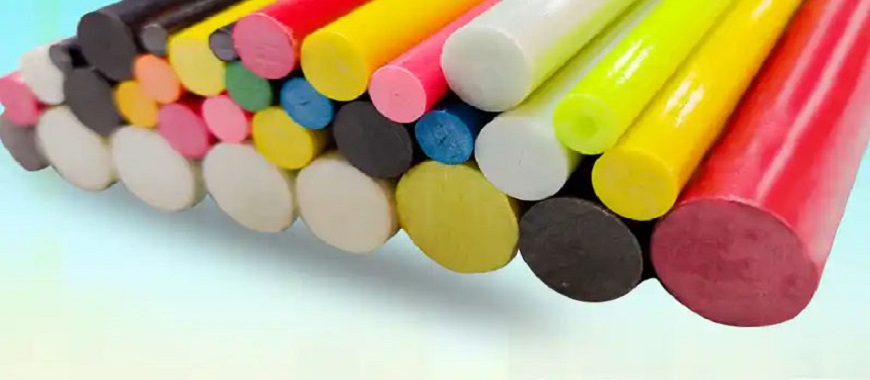
Shrimp baiting is a popular activity for anglers looking to catch shrimp efficiently. A key factor in a successful outing is using reliable shrimp poles. These poles are essential for setting up bait lines in shallow waters where shrimp gather. Among the various materials used, fiberglass shrimp poles stand out as a top choice. They are highly durable, able to withstand harsh conditions like mud and rough currents. Additionally, fiberglass shrimp poles are lightweight, making them easy to handle even for beginners. Their strength and flexibility ensure that they don’t break easily, offering long-term reliability for shrimp baiters. Solid fiberglass poles are widely preferred for their performance and ease of use.
Why Choose Fiberglass Shrimp Poles?
When it comes to shrimp baiting, fiberglass shrimp poles are the go-to choice for many anglers, and for good reasons. Their durability, ease of use, and customization options make them stand out from the crowd.
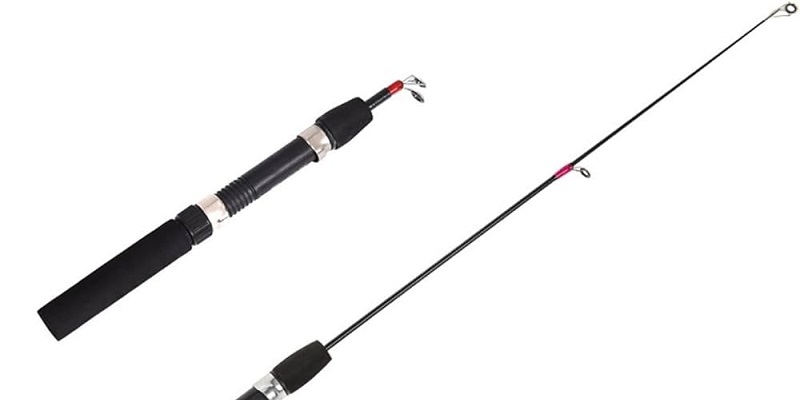
Durability
Fiberglass shrimp poles are built to last, especially in tough environments. They can handle the muck and pluff mud of shallow waters, as well as rough currents. Fiberglass doesn’t easily crack or splinter, making these poles reliable for extended use. Even in challenging conditions, fiberglass poles remain strong, ensuring a long lifespan.
Ease of Use
One of the top reasons anglers prefer fiberglass shrimp poles is their lightweight structure. These poles are easy to carry and set up, even for beginners. Their strength ensures they won’t bend or break under pressure, making them practical for shrimpers of all experience levels.
Visibility and Customization
For added convenience, fiberglass shrimp poles can be easily customized. By attaching reflective tape or small floats, visibility is improved, especially in low-light conditions. This customization reduces the risk of losing poles in deep water, adding to their overall value.
Top Features of Fiberglass Baitcasting Rods for Fishing
Best Fiberglass Shrimp Poles for Sale
When searching for fiberglass shrimp poles, selecting the best options ensures a successful shrimping experience. Several factors come into play, such as brand quality, price, and specific features.
Quality Recommendations
There are a few standout brands known for producing high-quality fiberglass shrimp poles. These include GangLong Fiberglass, which offers durable and flexible poles that withstand tough conditions.
Price Range
The cost of fiberglass shrimp poles typically ranges between $150 to $200 per set. This price reflects the poles’ durability and quality. While the initial investment may seem high, these poles are built to last, making them cost-effective over time.
Features to Look For
When buying fiberglass shrimp poles, it’s important to consider several features. First, the length should be adequate for the depth of water you’re shrimping in, usually between 15 to 20 feet. Flexibility is another key aspect, as it ensures the pole can bend without breaking in strong currents. Buoyancy aids like small floats prevent poles from sinking if they get dislodged. Lastly, visibility markers, such as reflective tape, help locate the poles easily during low-light conditions.
Essential Tips on How to Fish Wire with Fiberglass Rods
Where to Find Fiberglass Shrimp Poles for Sale Near You
Finding fiberglass shrimp poles near you is easier than ever, with several options available both online and locally. Whether you’re looking for new or used poles, there are plenty of resources to explore.
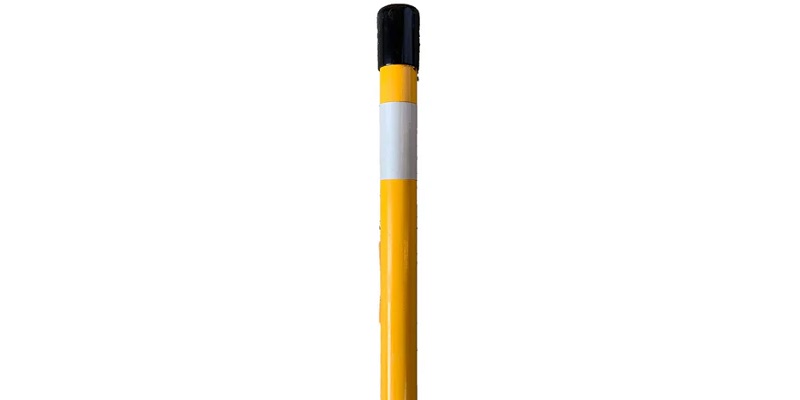
Online Retailers
Many online retailers stock fiberglass shrimp poles, including popular brands like GangLong Fiberglass.Shopping online provides convenience, allowing you to compare prices, read reviews, and select the right poles for your needs. You can easily find poles ranging from basic models to more advanced ones, often with fast shipping options.
Local Shops
If you prefer to see the product before purchasing, local bait and tackle shops are a great option. Many of these shops stock fiberglass shrimp poles, particularly in coastal areas where shrimp baiting is popular. Asking for GangLong Fiberglass poles, fiberglass rods or other trusted brands at these stores can ensure you’re getting a high-quality product. Local experts can also provide recommendations on the best length and features for your specific shrimping location.
Secondhand Markets
For those looking to save money, secondhand markets offer great opportunities.While these may be more affordable, it’s important to inspect them for wear and damage. You can often find quality poles, such as those from GangLong Fiberglass, at a fraction of the cost if you’re willing to buy used.
Why Are Fiberglass Rods Shorter Than Other Fishing Rods
DIY Fiberglass Shrimp Poles
Building your own fiberglass shrimp poles can be a rewarding and cost-effective project. With the right materials and steps, you can create durable poles that rival store-bought options.
Materials Needed
To create your own fiberglass shrimp poles, you will need a few essential materials. Fiberglass poles, such as those from GangLong Fiberglass, provide the backbone of your project due to their strength and flexibility. Additionally, you’ll need PVC pipes, which can be combined with the fiberglass for support columns and added length. Other necessary items include rivets, reflective tape for visibility, and small floats to prevent poles from sinking.
Step-by-Step Instructions
- Start by selecting fiberglass poles, like those from GangLong Fiberglass, that are around 10 feet long.
- Cut PVC pipes to the desired length, typically extending the pole to 15-20 feet.
- Insert the fiberglass pole into the PVC pipe, ensuring a snug fit.
- Secure the connection using rivets to prevent the pieces from coming apart.
- Flatten the end of the PVC pipe to make it easier to stick into the mud.
- Add reflective tape to the top of the pole and attach a small float for improved visibility.
Cost Efficiency
DIY fiberglass shrimp poles can save you money compared to buying a new set. While a high-quality set of GangLong Fiberglass poles can cost $150-$200, making your own using fiberglass and PVC materials can significantly reduce expenses. Typically, you can build a durable, custom set for under $100, depending on material availability. This makes DIY shrimp poles an attractive option for budget-conscious anglers.
Tips for Using Fiberglass Shrimp Poles
Using fiberglass shrimp poles effectively can improve your shrimp baiting success. Here are some important tips to ensure your poles are set up properly and perform well in various conditions.
Proper Setup
When setting up your fiberglass shrimp poles, make sure they are firmly planted in the seabed. Push the pole deep enough into the mud or sand to prevent it from tipping over. This ensures the pole stays upright and in place during baiting.
Use Reflective Tape for Visibility
Adding reflective tape to your fiberglass shrimp poles improves visibility in low-light conditions. You can also attach small, brightly colored floats at the top of the pole. This helps you spot your poles easily and prevents losing them in deep water.
Adjust for Fast Currents
In fast-moving waters, it’s essential to angle your fiberglass shrimp poles slightly against the current. This prevents the current from dislodging your poles. Using floats and anchoring them deeper will also improve their stability in strong currents.
Optimize for Slow Waters
For slow-moving or still waters, position your fiberglass shrimp poles vertically. This allows for easy bait line setup without the need to anchor the poles as deeply. Slower currents give more flexibility in placement.
Space Poles Evenly
When using multiple fiberglass shrimp poles, space them evenly apart to cover more area. This increases your chances of attracting shrimp to your bait lines and avoids tangling.
Following these tips will help maximize the effectiveness of your fiberglass shrimp poles and improve your overall shrimping experience.
About Fiberglass Shrimp Rods
Fiberglass shrimp poles offer numerous advantages that can greatly improve your shrimp baiting experience. Brands like GangLong Fiberglass provide durable, lightweight poles that are easy to handle in both fast and slow-moving waters. Their resilience in harsh environments, such as pluff mud and strong currents, ensures long-lasting performance. Visibility can be enhanced with reflective tape or floats, reducing the risk of losing your poles. Whether you purchase ready-made poles or create your own DIY versions, fiberglass shrimp poles give you the flexibility, strength, and efficiency you need for a successful shrimping trip.
If you’re looking to buy high-quality fiberglass shrimp poles, check out local bait and tackle shops or online retailers. Brands like GangLong Fiberglass offer reliable options to suit various needs. For those interested in building their own poles, consider the DIY tips provided here to save money and customize your gear. We encourage you to share your shrimping success stories or DIY tips in the comments. Your experience could help others improve their shrimping adventures.
Comparing Fiberglass Shrimp Poles to Alternative Materials
Shrimp poles can be made from various materials besides fiberglass, each offering unique advantages and disadvantages. Below is a detailed introduction to alternative materials, along with a comparison to fiberglass.
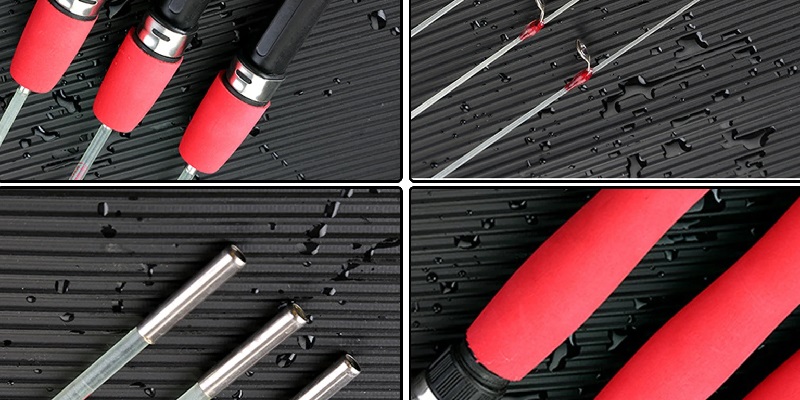
Bamboo Shrimp Poles
Features
- Natural and Lightweight: Bamboo poles are lightweight and naturally buoyant, making them easy to handle.
- Flexibility: They are moderately flexible, which helps in reducing strain on fishing lines during currents or strong tides.
- Cost-Effective: Bamboo is often inexpensive and readily available, making it a popular choice for hobbyists.
Drawbacks
- Durability: Bamboo poles are prone to rotting and splintering when exposed to prolonged moisture or saltwater, requiring frequent replacements.
- Limited Strength: They are not as strong as fiberglass and may break under heavy strain.
Comparison with Fiberglass
Fiberglass outperforms bamboo in durability and resistance to water damage. While bamboo poles may be suitable for light, short-term use, fiberglass is a better choice for regular and long-lasting shrimp baiting.
Aluminum Shrimp Poles
Features
- Lightweight and Strong: Aluminum poles are light but extremely strong, capable of withstanding significant force.
- Corrosion-Resistant: Most aluminum poles are treated to resist corrosion in saltwater environments.
- Reusable: They are durable and can last for many seasons with minimal maintenance.
Drawbacks
- Cost: Aluminum poles are more expensive than fiberglass or bamboo.
- Rigidity: Aluminum lacks flexibility, which may cause the pole to bend permanently or snap under extreme pressure.
Comparison with Fiberglass
Aluminum poles share similar durability with fiberglass but are heavier and less flexible. Fiberglass is more forgiving under stress, making it ideal for varying water conditions.
Carbon Fiber Shrimp Poles
Features
- Ultralight and Sturdy: Carbon fiber is extremely lightweight yet stronger than most materials, making it ideal for portable shrimping setups.
- High Sensitivity: Its rigidity allows for precise bait placement, a significant advantage when targeting specific areas.
- Corrosion Resistance: Like fiberglass, carbon fiber resists damage from prolonged exposure to water.
Drawbacks
- High Cost: Carbon fiber is one of the most expensive materials, often limiting its use to professional shrimpers or enthusiasts.
- Brittleness: While strong, it can be brittle under extreme pressure or impact.
Comparison with Fiberglass
Carbon fiber is lighter and stiffer than fiberglass, but fiberglass offers better cost-effectiveness and resilience, especially for heavy-duty use.
Plastic or PVC Shrimp Poles
Features
- Affordable and Lightweight: PVC or plastic poles are inexpensive and easy to handle.
- Corrosion-Free: These materials are immune to rust or rotting, making them suitable for occasional shrimping.
- Ease of Customization: PVC poles can be easily cut or modified for specific needs.
Drawbacks
- Limited Strength: Plastic and PVC lack the strength needed for heavy loads or rough water conditions.
- Short Lifespan: They degrade faster in sunlight and may crack under pressure.
Comparison with Fiberglass
While PVC is cheaper, fiberglass is far superior in strength, flexibility, and longevity, making it more suitable for serious shrimp baiting.
Wood Shrimp Poles
Features
- Traditional Material: Wooden poles, often handcrafted, are still used in some regions for their natural buoyancy and availability.
- Aesthetic Appeal: They have a classic look and feel, appealing to traditionalists.
Drawbacks
- High Maintenance: Wood is prone to water absorption, rotting, and warping over time.
- Heavier: Wooden poles are typically heavier than fiberglass, making them less convenient to transport.
Comparison with Fiberglass
Fiberglass is lighter, more durable, and less prone to water damage, making it the preferred choice over wood.
Comparison Table
| Material | Weight | Durability | Flexibility | Cost | Corrosion Resistance |
|---|---|---|---|---|---|
| Fiberglass | Lightweight | High | Moderate | Moderate | Excellent |
| Bamboo | Lightweight | Low | Moderate | Low | Poor |
| Aluminum | Lightweight | High | Low | High | Good |
| Carbon Fiber | Ultralight | High (but brittle) | Low | Very High | Excellent |
| Plastic/PVC | Lightweight | Low | Low | Very Low | Good |
| Wood | Heavy | Low | Moderate | Low | Poor |
While bamboo, aluminum, carbon fiber, PVC, and wood each have their strengths, fiberglass is the most well-rounded material for shrimp poles. It offers an optimal balance of durability, flexibility, and cost-effectiveness, making it ideal for both casual and professional shrimpers.
How to Choose the Right Fiberglass Shrimp Poles
Selecting the right fiberglass shrimp poles involves evaluating several critical factors to ensure optimal performance and durability. Below is a detailed introduction to the considerations you should take into account:
Length of the Pole
- Why It Matters: The length of a fiberglass shrimp pole determines its versatility in different water depths. Shorter poles (6–8 feet) are ideal for shallow waters, while longer poles (10–12 feet) work better in deeper or high-tide conditions.
- Considerations: Choose the length based on the typical environment where you’ll be shrimping. For flexibility, some fiberglass poles come in adjustable or sectional designs.
Pole Diameter and Strength
- Why It Matters: A thicker pole provides added strength, allowing it to withstand stronger currents and heavier loads.
- Considerations: Evaluate the shrimping conditions—strong currents or large shrimp catches may require thicker poles. Ensure the pole maintains lightweight properties to avoid difficulty in handling.
Durability and Coating
- Why It Matters: Fiberglass is inherently durable, but some poles come with extra coatings that enhance their resistance to UV rays, saltwater corrosion, and wear.
- Considerations: Look for poles with UV protection or marine-grade coatings for extended longevity, especially if you shrimp frequently in saltwater environments.
Portability and Storage
- Why It Matters: The ease of transport and storage is essential, particularly for frequent shrimpers or those with limited storage space.
- Considerations: Opt for collapsible or sectional poles that can be disassembled for compact storage. Lightweight fiberglass designs are easier to carry, especially when shrimping involves walking long distances.
Visibility Enhancements
- Why It Matters: Marking your shrimp poles for visibility during night shrimping or in low-light conditions can prevent loss or misplacement.
- Considerations: Many fiberglass poles come with reflective tape, bright colors, or detachable markers. These features are invaluable for identifying poles in dark waters.
Compatibility with Accessories
- Why It Matters: Fiberglass shrimp poles are often used with bait lines, nets, or other accessories.
- Considerations: Check for poles with smooth surfaces to avoid damaging bait lines. Ensure they have secure tie points or hooks for attaching bait bags or weights.
Cost and Budget
- Why It Matters: The price of fiberglass shrimp poles varies depending on length, coating, and additional features.
- Considerations: While higher-end poles with advanced coatings or portability features might be more expensive, they often offer better value in the long term due to their durability.
Manufacturer Reputation and Reviews
- Why It Matters: Poles from reputable manufacturers are more likely to meet quality standards and provide reliable performance.
- Considerations: Research user reviews and brand reliability before purchasing. Established brands often offer warranties or customer support, providing added peace of mind.
By considering these factors—length, strength, durability, portability, visibility, accessory compatibility, cost, and manufacturer reputation—you can select the right fiberglass shrimp poles that suit your shrimping needs and environment. Making an informed choice ensures a better experience and maximizes your catch.
FAQs about Fiberglass Shrimp Poles
Shrimp poles are essential tools for shrimp baiting, a method used to catch shrimp in shallow waters. These poles, like fiberglass shrimp poles, are driven into the seabed or muddy areas to set up bait lines. The bait, typically chum, is spread between the poles to attract shrimp. Once the shrimp gather, fishermen use cast nets to catch them. Shrimp poles also serve as markers, helping to keep track of baiting locations. Their durability and ease of use make them a must-have for successful shrimping.
The best chum for attracting shrimp typically includes a mix of fish meal, cat food, and oily substances like menhaden oil. Some shrimpers also use ground-up fish or fish scraps. This mixture, when spread in the water, creates a scent trail that lures shrimp toward your baiting area. The oily consistency of the chum ensures that it stays in the water longer, attracting shrimp over a wide range. Commercial shrimp bait mixes are also available and can be combined with local ingredients for improved effectiveness.
To attract shrimp, most anglers use chum or bait like fish meal, oily fish, or commercial shrimp bait. Fiberglass shrimp poles are placed in the water to hold bait lines, where chum is scattered. The strong scent of fish oils, combined with the right bait, entices shrimp to gather around the poles. Additionally, shrimp are drawn to light, so night shrimping with underwater lights can also increase your catch. Both methods work well in areas where shrimp naturally thrive, like muddy creeks or shallow coastal waters.
Catching live shrimp for bait requires a few essential tools. First, locate shallow water areas where shrimp gather, usually near grassy or muddy beds. Use fiberglass shrimp poles to mark your baiting area, and scatter chum between them. Wait for the shrimp to be drawn in by the chum. Once shrimp start gathering, cast a small mesh net or shrimp trawl to catch them. It’s important to handle live shrimp gently, keeping them in a bait bucket with fresh, aerated water until you’re ready to use them for fishing.
When using fiberglass shrimp poles, bait placement and type are critical to attract shrimp effectively. Shrimp are drawn to baited areas by scent rather than visual cues. Popular bait for shrimp baiting includes fishmeal, ground-up oily fish like menhaden, or commercial shrimp attractants. The bait is typically placed in fine mesh bags, weighted, and positioned strategically along fiberglass poles in shallow waters. These poles are durable and ideal for creating a grid-like structure that keeps the bait stationary, even in shifting tides.
Fiberglass poles play a significant role as they are lightweight, resistant to water damage, and easy to handle. This makes setting up bait lines straightforward, ensuring the bait scent disperses effectively in the water. Additionally, using reflective tape or markers on fiberglass poles can help you locate your setup at night, enhancing the efficiency of your shrimping operation.
Fiberglass shrimp poles work best during an incoming or high tide when baiting shrimp. Shrimp naturally move with the tides, making these times ideal for setting baited poles. The incoming tide brings shrimp closer to shore, where baited poles can be strategically placed to maximize your catch. During high tide, the water levels rise, allowing shrimp to access areas where you’ve deployed your bait.
Fiberglass poles are particularly well-suited for these conditions due to their stability and adaptability. They can be anchored firmly into the seabed, even in shifting waters, ensuring your bait stays in place as the tide rises. Their durability ensures they resist corrosion from saltwater, making them a long-term investment for frequent shrimp baiters. By pairing the right tide with a well-laid-out grid of fiberglass poles, you increase your chances of a successful shrimp haul.
Fiberglass shrimp poles generally range between 8 to 12 feet in length, though custom options are available depending on specific needs. The length allows for versatility in setting up bait lines in various water depths. These poles are designed to be lightweight yet sturdy, ensuring they can be easily transported and installed without compromising on durability.
The longer fiberglass poles are especially advantageous when shrimp baiting in deeper or more turbulent waters, as they ensure the bait remains within the shrimp’s feeding zone. Some poles may also come in sections, allowing for adjustable lengths and easier storage. The smooth surface of fiberglass poles minimizes wear and tear on the fishing lines tied to them, further enhancing their functionality. Their non-corrosive nature makes them a reliable choice for repeated use in both saltwater and freshwater environments.
Shrimp use their long antennae for sensing their environment, detecting food sources, and identifying potential predators. When using fiberglass shrimp poles, it’s essential to consider this sensory behavior. Shrimp rely heavily on chemical signals in the water, which their antennae help detect. This makes bait scent crucial in attracting them.
Fiberglass poles aid this process by anchoring bait securely in specific locations, allowing the scent to disperse steadily through the water. The durability and smoothness of fiberglass ensure the bait setup remains stable, even in areas with strong currents. Additionally, reflective markers on the poles can help attract shrimp that may be curious about light in the water.
By understanding how shrimp use their antennae to locate food, shrimpers can strategically deploy baited fiberglass poles, enhancing the likelihood of luring shrimp effectively.

As the editor of GangLong Fiberglass, I have years of experience and in-depth research, focusing on cable tray products, fiberglass solutions, and grille systems. I incorporate years of industry insights and practical experience into every content, committed to promoting the progress of the industry. At GangLong Fiberglass, my commitment is reflected in every product, from innovative cable trays to durable fiberglass solutions and sturdy grille systems. As an authoritative voice in the industry, my goal is to provide valuable information to professionals and businesses and promote forward-looking solutions.

